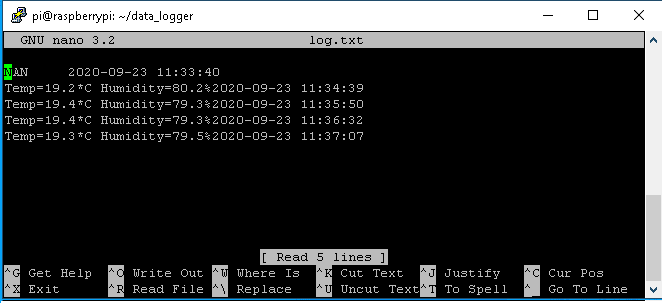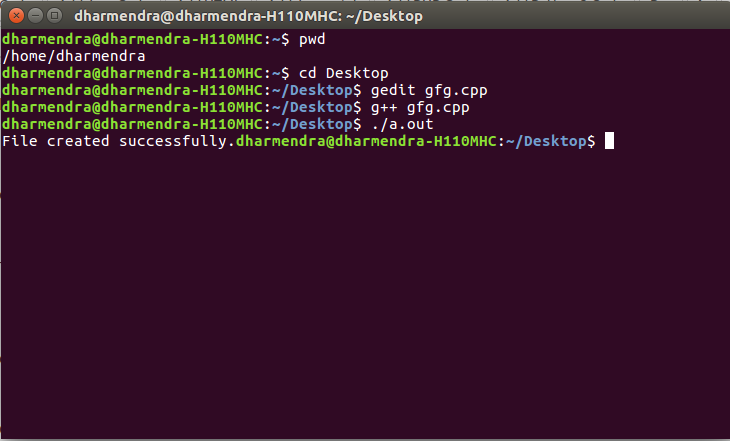Previously, we described R base functions (read.delim() and read.csv()) for importing txt and csv files into R.
Write.text: Save the content of SparkDataFrame in a text file at the specified path. Description Save the content of the SparkDataFrame in a text file at the specified path. If your subdomain is sub.example.com, write 'sub' for the Host. TXT: Your unique security token provided in the Admin console's verification instructions. The token is a 68-character string that begins with google-site-verification=, followed by 43 additional characters.
Writing data to a file. The R code below exports the built-in R mtcars data set to a tab-separated ( sep = “ t”) file called mtcars.txt in the current working directory. The robots.txt file, also known as the robots exclusion protocol or standard, is a text file that tells web robots (most often search engines) which pages on your site to crawl. It also tells web robots which pages not to crawl. Let’s say a search engine is about to visit a site. Welcome to C# Tutorial. Example 3 – Write to Text File – WriteLine in Loop. In the following example, we get StreamWriter for a file and then write each line in the string array to the file.
Google authenticator pc firefox.
Launch RStudio as described here: Running RStudio and setting up your working directory
The R base function write.table() can be used to export a data frame or a matrix to a file.
A simplified format is as follow:
- x: a matrix or a data frame to be written.
- file: a character specifying the name of the result file.
- sep: the field separator string, e.g., sep = “t” (for tab-separated value).
- dec: the string to be used as decimal separator. Default is “.”
- row.names: either a logical value indicating whether the row names of x are to be written along with x, or a character vector of row names to be written.
- col.names: either a logical value indicating whether the column names of x are to be written along with x, or a character vector of column names to be written. If col.names = NA and row.names = TRUE a blank column name is added, which is the convention used for CSV files to be read by spreadsheets.
It’s also possible to write csv files using the functions write.csv() and write.csv2().
- write.csv() uses “.” for the decimal point and a comma (“,”) for the separator.
- write.csv2() uses a comma (“,”) for the decimal point and a semicolon (“;”) for the separator.
The syntax is as follow:
The R code below exports the built-in Rmtcars data set to a tab-separated ( sep = “t”) file called mtcars.txt in the current working directory:
If you don’t want to write row names, use row.names = FALSE as follow:
Write data from R to a txt file: write.table(my_data, file = “my_data.txt”, sep = “”)
- Write data from R to a csv file: write.csv(my_data, file = “my_data.csv”)
- Previous chapters
- Next chapters
This analysis has been performed using R (ver. 3.2.3).
Show me some love with the like buttons below.. Thank you and please don't forget to share and comment below!!
Montrez-moi un peu d'amour avec les like ci-dessous .. Merci et n'oubliez pas, s'il vous plaît, de partager et de commenter ci-dessous!
Recommended for You!
More books on R and data science
Recommended for you
This section contains best data science and self-development resources to help you on your path.

Coursera - Online Courses and Specialization
Data science
- Course: Machine Learning: Master the Fundamentals by Standford
- Specialization: Data Science by Johns Hopkins University
- Specialization: Python for Everybody by University of Michigan
- Courses: Build Skills for a Top Job in any Industry by Coursera
- Specialization: Master Machine Learning Fundamentals by University of Washington
- Specialization: Statistics with R by Duke University
- Specialization: Software Development in R by Johns Hopkins University
- Specialization: Genomic Data Science by Johns Hopkins University
Popular Courses Launched in 2020
- Google IT Automation with Python by Google
- AI for Medicine by deeplearning.ai
- Epidemiology in Public Health Practice by Johns Hopkins University
- AWS Fundamentals by Amazon Web Services
Trending Courses
- The Science of Well-Being by Yale University
- Google IT Support Professional by Google
- Python for Everybody by University of Michigan
- IBM Data Science Professional Certificate by IBM
- Business Foundations by University of Pennsylvania
- Introduction to Psychology by Yale University
- Excel Skills for Business by Macquarie University
- Psychological First Aid by Johns Hopkins University
- Graphic Design by Cal Arts
Books - Data Science
Our Books
- Practical Guide to Cluster Analysis in R by A. Kassambara (Datanovia)
- Practical Guide To Principal Component Methods in R by A. Kassambara (Datanovia)
- Machine Learning Essentials: Practical Guide in R by A. Kassambara (Datanovia)
- R Graphics Essentials for Great Data Visualization by A. Kassambara (Datanovia)
- GGPlot2 Essentials for Great Data Visualization in R by A. Kassambara (Datanovia)
- Network Analysis and Visualization in R by A. Kassambara (Datanovia)
- Practical Statistics in R for Comparing Groups: Numerical Variables by A. Kassambara (Datanovia)
- Inter-Rater Reliability Essentials: Practical Guide in R by A. Kassambara (Datanovia)
Others
- R for Data Science: Import, Tidy, Transform, Visualize, and Model Data by Hadley Wickham & Garrett Grolemund
- Hands-On Machine Learning with Scikit-Learn, Keras, and TensorFlow: Concepts, Tools, and Techniques to Build Intelligent Systems by Aurelien Géron
- Practical Statistics for Data Scientists: 50 Essential Concepts by Peter Bruce & Andrew Bruce
- Hands-On Programming with R: Write Your Own Functions And Simulations by Garrett Grolemund & Hadley Wickham
- An Introduction to Statistical Learning: with Applications in R by Gareth James et al.
- Deep Learning with R by François Chollet & J.J. Allaire
- Deep Learning with Python by François Chollet
Want to Learn More on R Programming and Data Science?
Follow us by EmailOn Social Networks:
Click to follow us on Facebook and Google+ :
Comment this article by clicking on 'Discussion' button (top-right position of this page)
C# Write to File
To write text to file in C#, you can use System.IO.File.WriteAllLines() function or System.IO.File.WriteAllText() function.
Or you can use WriteLine in recursive loop to write lines to a file. It gives more control on each line to be written.
Example 1 – Write to Text File – System.IO.File.WriteAllLines()
System.IO.File.WriteAllLines() writes strings in an array, to a text file.
Program.cs
Output

D:lines.txt
Example 2 – Write to Text File – System.IO.File.WriteAllText()
System.IO.File.WriteAllText() writes string to a text file specified by the argument passed to the function.
Program.cs
Output
D:sample.txt
Example 3 – Write to Text File – WriteLine in Loop
Python Read And Write Txt

In the following example, we get StreamWriter for a file and then write each line in the string array to the file.
Program.cs
Output
Text Writer C#
D:lines.txt
Conclusion
Text Writer Font
In this C# Tutorial, we learned to write string to a text file, or lines stored in a string array to a text file.
